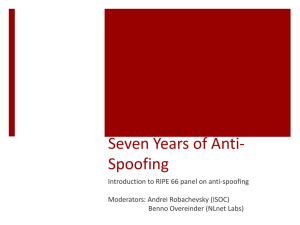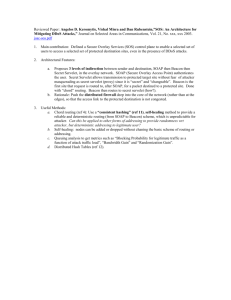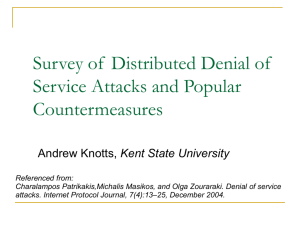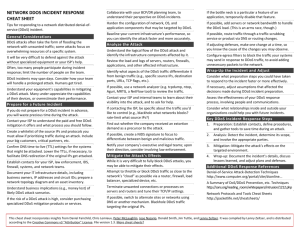Fighting the DDoS Menace!
advertisement
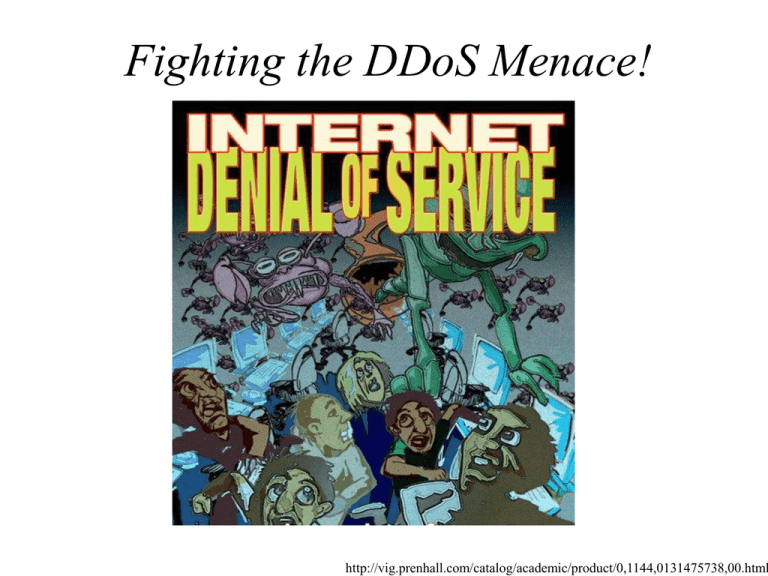
Fighting the DDoS Menace! http://vig.prenhall.com/catalog/academic/product/0,1144,0131475738,00.html Recent High Profile DDoS Attacks ● ● ● ● Protx (Online payments processing firm) : October 31st WeaKnees.com, RapidSatellite.com (e-commerce) October 6th WorldPay (section of Royal Bank of Scotland) : October 4th Authorize.net (US credit card processing firm) : September 23rd Fighting the Good Fight ● ● Aggregate-based congestion control (ACC) – identify a pattern of packets – apply a rate-limiter to the pattern(s) Local ACC versus Global ACC – allow a router to request adjacent upstream routers to rate-limit traffic corresponding to a specific aggregate. An Illustrated Example “Controlling High Bandwidth Aggregates in the Network” (Mahajan et al, 2001) ACC Works??? The Scalable Simulation Framework (http://www.ssfnet.org) focus on scalability model scalability: # of nodes, traffic flows, bandwidth, system heterogeneity ● contains a DDoS scenario ● much faster learning curve than NS tools (no tcl/tk) ● What's the catch? ● ● ● Well, it turns out the DDoS scenario models a TCP SYN flooding denial of service attack. This DDoS attacks the TCP/IP stack of the target servers. It is not bandwidth limited! So congestion control is not the appropriate response. Quickly, we must model a bandwidth-limited DDoS attack.... Network Topology Client Topology Server Topology DDoS Topology But What Does It Do? ● 164 iterations, no DDoS enabled: – ● 68 iterations, DDoS enabled: – ● mean 202.71 connections, std. dev. 13.79 mean 194.29 connections, std. dev. 15.47 59 iterations, DDoS enabled & local ACC: – mean 196.98 connections, std. dev. 14.33 TODO LIST ● ● Improve the effectiveness of the DDoS attack Use identical random number seeds across all three trial. This will show strict ordering of, DDoS < DDoS + local ACC ≤ no DDoS
